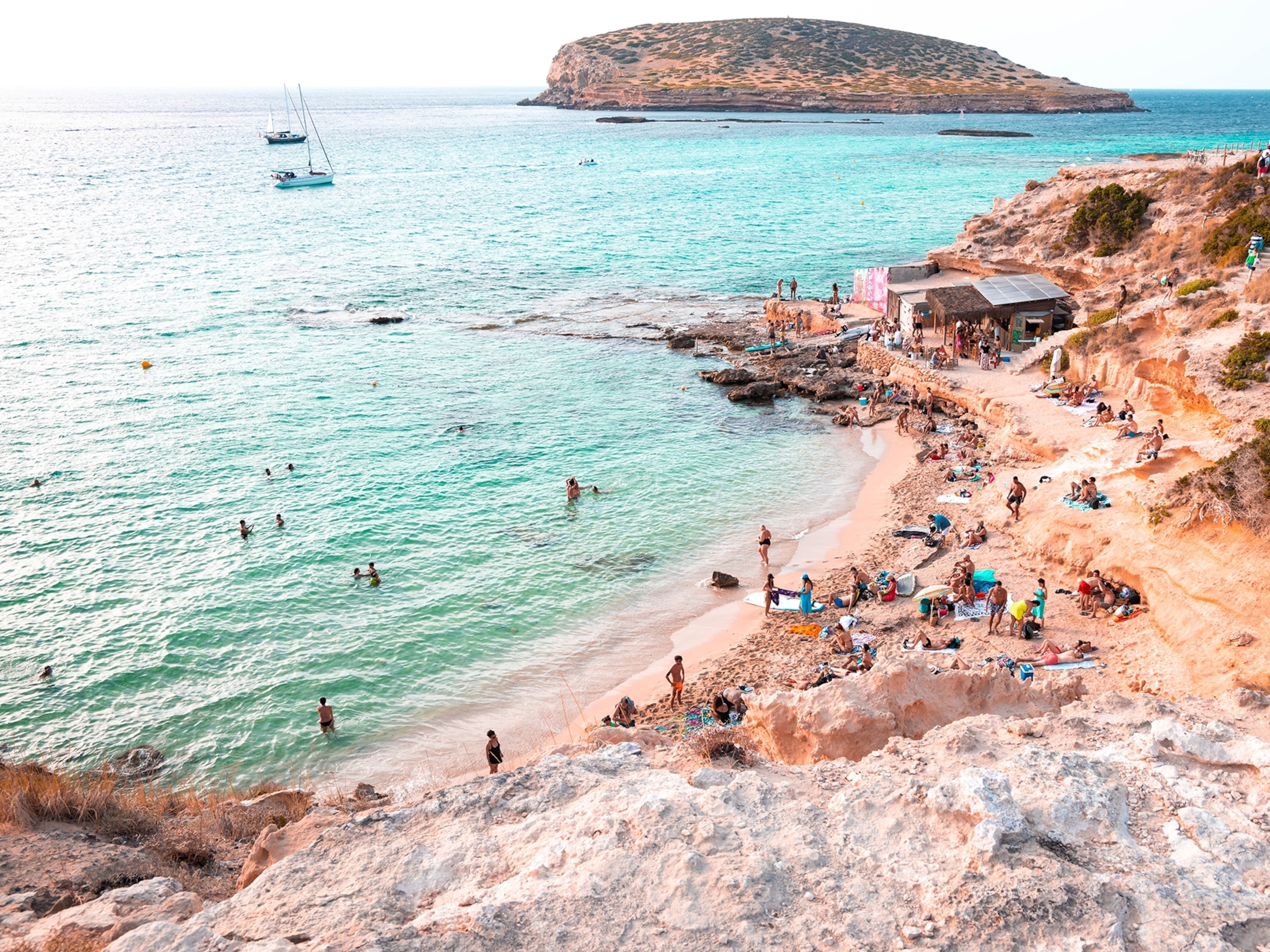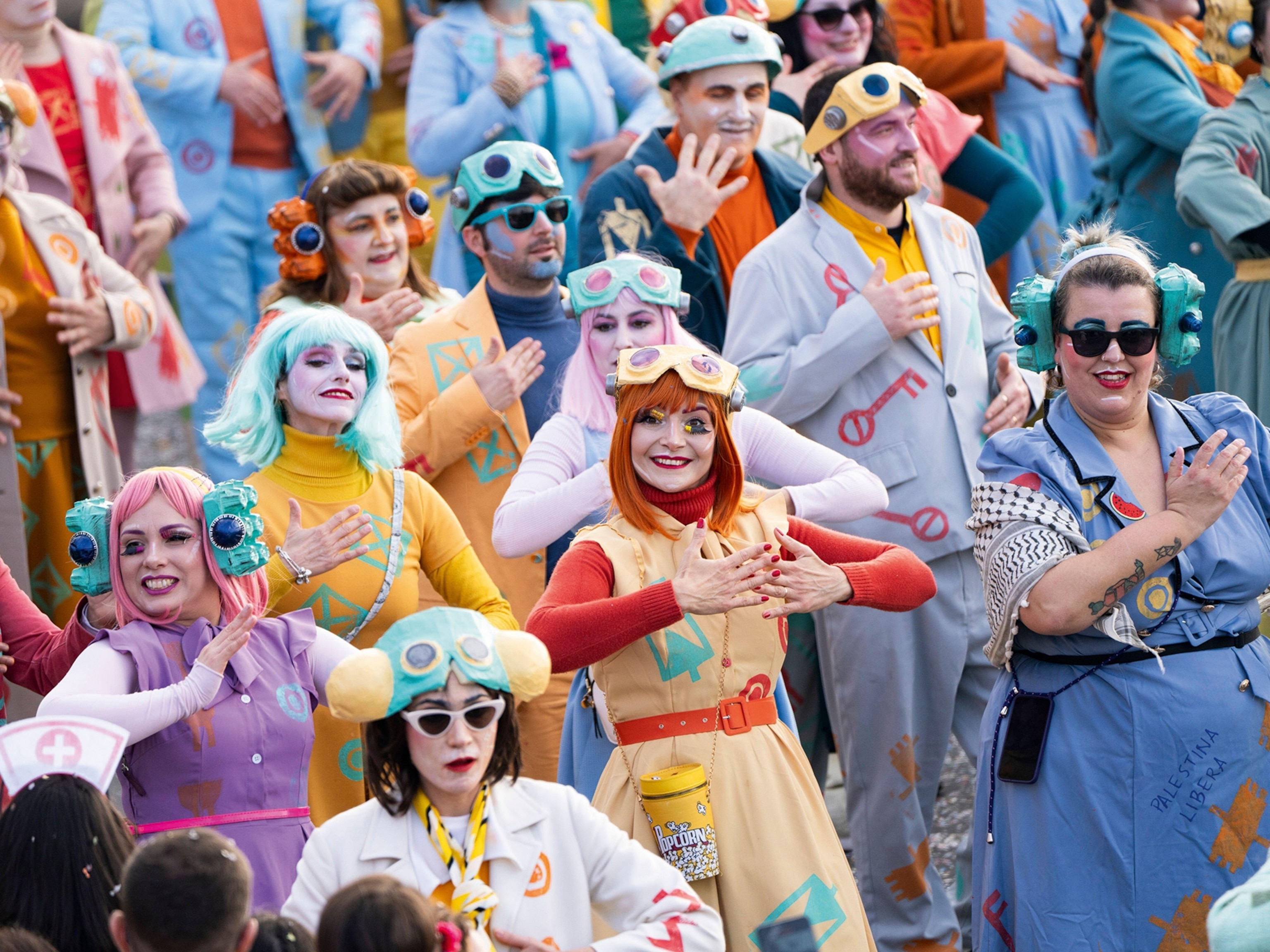It’s Carnival season in the Caribbean. Here’s how to experience it.
More than just a party, Carnival is a tradition steeped in history. We delve into unique celebrations across the islands, from stickfighting and chipping in Trinidad to Junkanoo in the Bahamas.
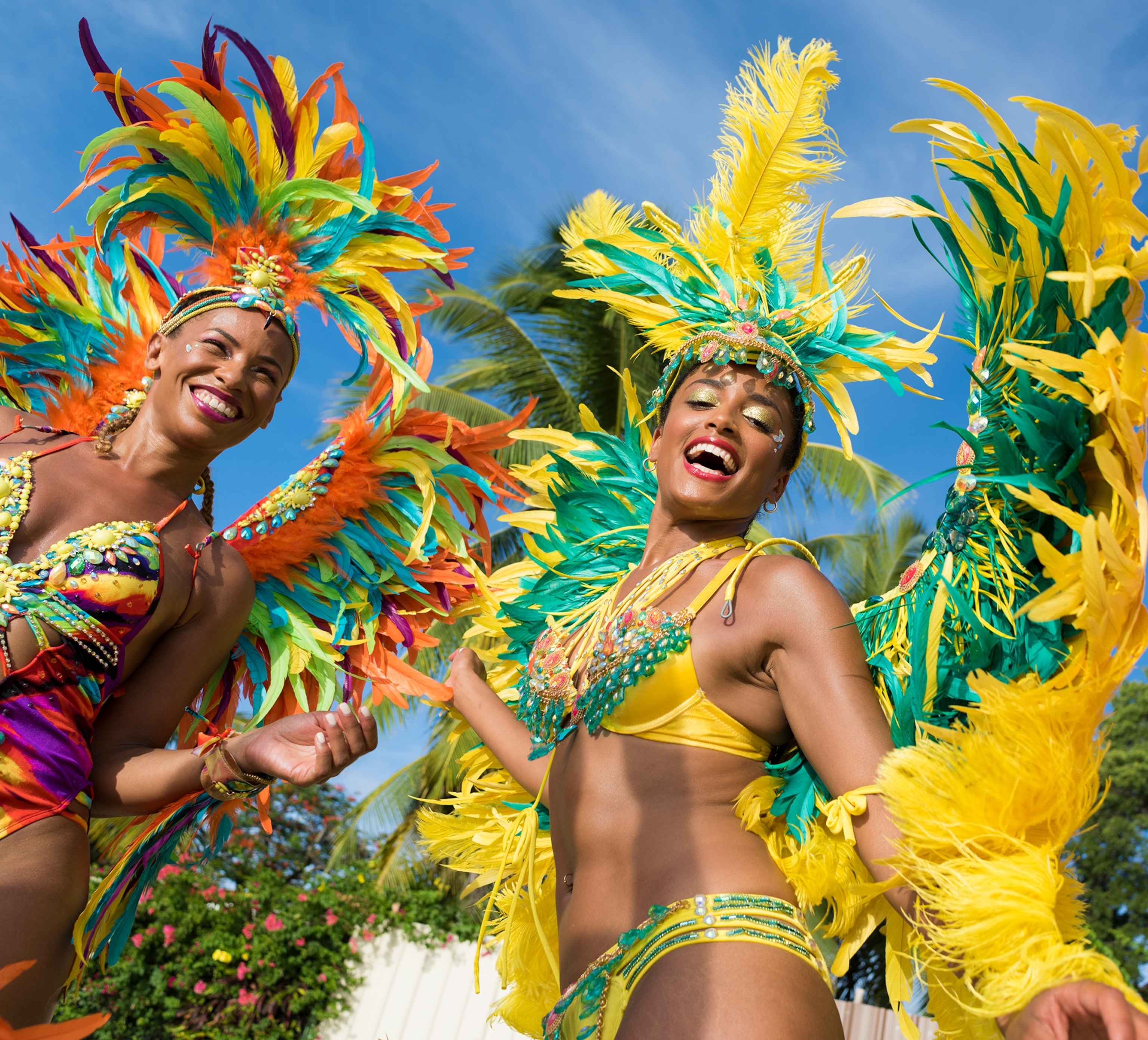
More than two dozen countries make up the Caribbean, each with its own vernacular, history, food, and culture. Despite these distinctions, one tradition connects every island—Carnival. Born from the ingenuity of enslaved African people determined to survive in the face of brutality, the tradition has survived over the years with much of the same song, dance, and even mockery that were integral parts of its original movement.
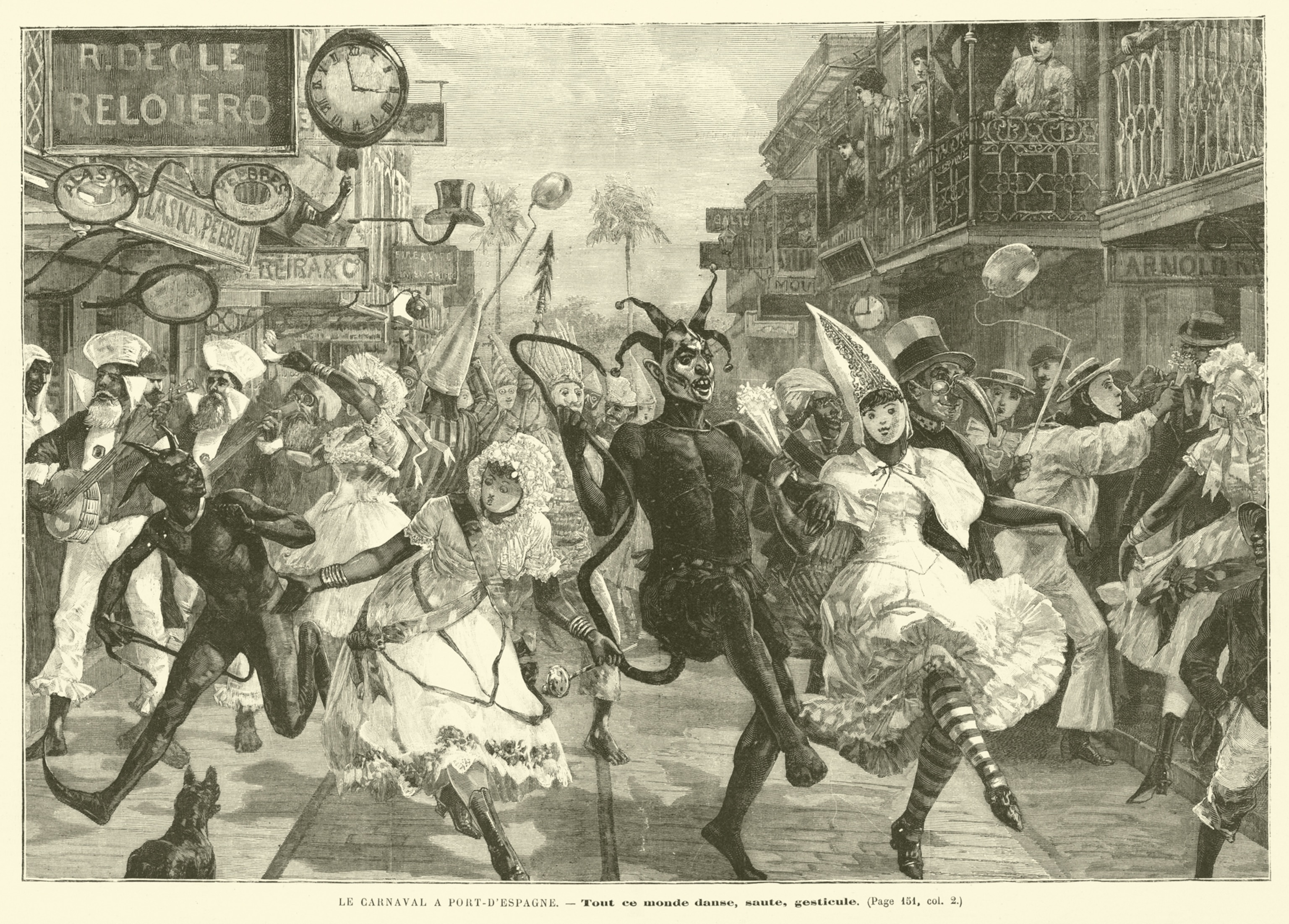
Historians believe that Carnival started in the late 18th century in Trinidad and Tobago, where enslaved people banned from participating in the masquerades and pre-Lenten celebrations of French plantation owners created their defiant rituals. The discarded garments of their oppressors were made into costumes for satirical re-enactments of the opulent balls they could not attend.
Coded language to communicate and drumming would birth Calypso music. Bodies deliberately covered in black mud and paint celebrated the skin tone the enslaved were punished for. Today, celebrations like J’ouvert reenact this symbolic gesture, as people—with skin that gleams in black oil and hands that hold broken chains—fill the streets in revelry and remembrance from dusk to dawn.
Nearly 300 years later, Carnival draws thousands of people around the world to the islands with the height of celebrations culminating around Ash Wednesday. I’ve been fortunate to have experienced nearly every Caribbean Carnival, and each time I leave, I feel a tabanca—a Trinidadian word used to express a longing for what once was. The energy of Carnival is undeniably captivating, evident by the popular recaps on social media that have made it more mainstream.
As the tradition continues to grow in popularity, my hope is that its roots and the enslaved people who made it possible will not be forgotten. So much more than glittering costumes and non-stop partying, Carnival is a testimony to resilience and the ability to find joy through the most difficult times.
Delve into the history of Carnival celebrations on six Caribbean islands with tips on how to plan your visit.
(Related: Top 10 things to know about Mardi Gras.)
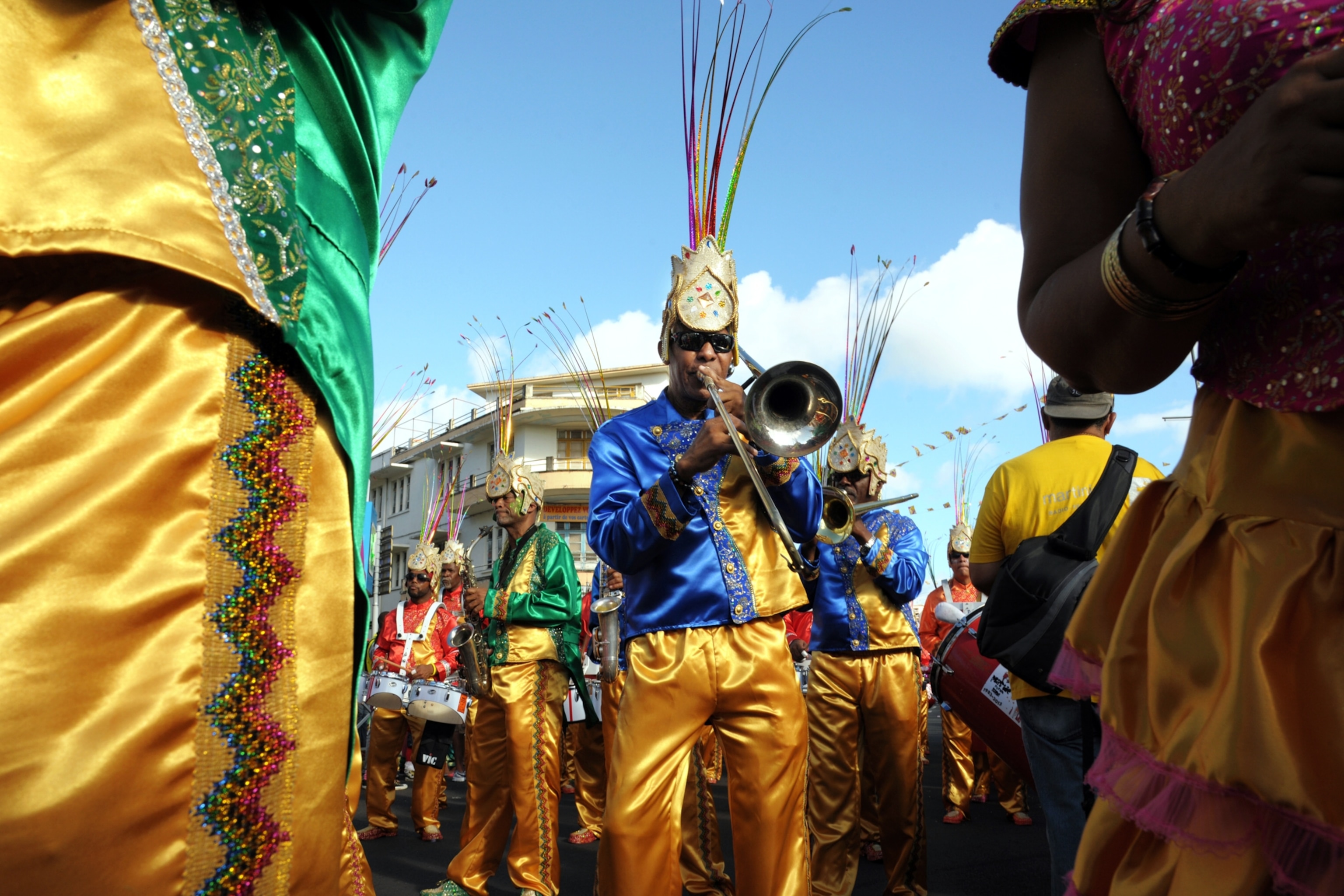
Carnival in Martinique
Martinique’s rich Carnival history originated in the town of Saint-Pierre in the 17th and 18th centuries. While wealthy island colonists attended lavish parties, enslaved Africans used satire and their traditions of music, dance, and costume as a means for creative freedom and celebration.
Today, Martinique’s Carnival kicks off with the daytime parades of Dimanche Gras (Fat Sunday) and sightings of the Nèg gwo siwo—people who smear their bodies in sugarcane syrup and charcoal as a remembrance to the legendary fugitive slaves from the region. Burlesque parties on Monday’s Lundi Gras and the red devil dress theme on Tuesday’s Mardi Gras bring thousands to the street.
For a great taste of the energy of Martinique’s nightlife during this time of year, join a party with Ethnique Carnival on Lundi Gras, and don’t miss the quick-to-sell-out, stylish soirees of event planners A Beautiful Life Mood. Both offer great opportunities to support local businesses that seek to keep the tradition of costume parties alive. On Ash Wednesday, the final day of Carnival, parade goers watch the ceremonial burning of King Vaval, an effigy that symbolizes the social issues of the time.
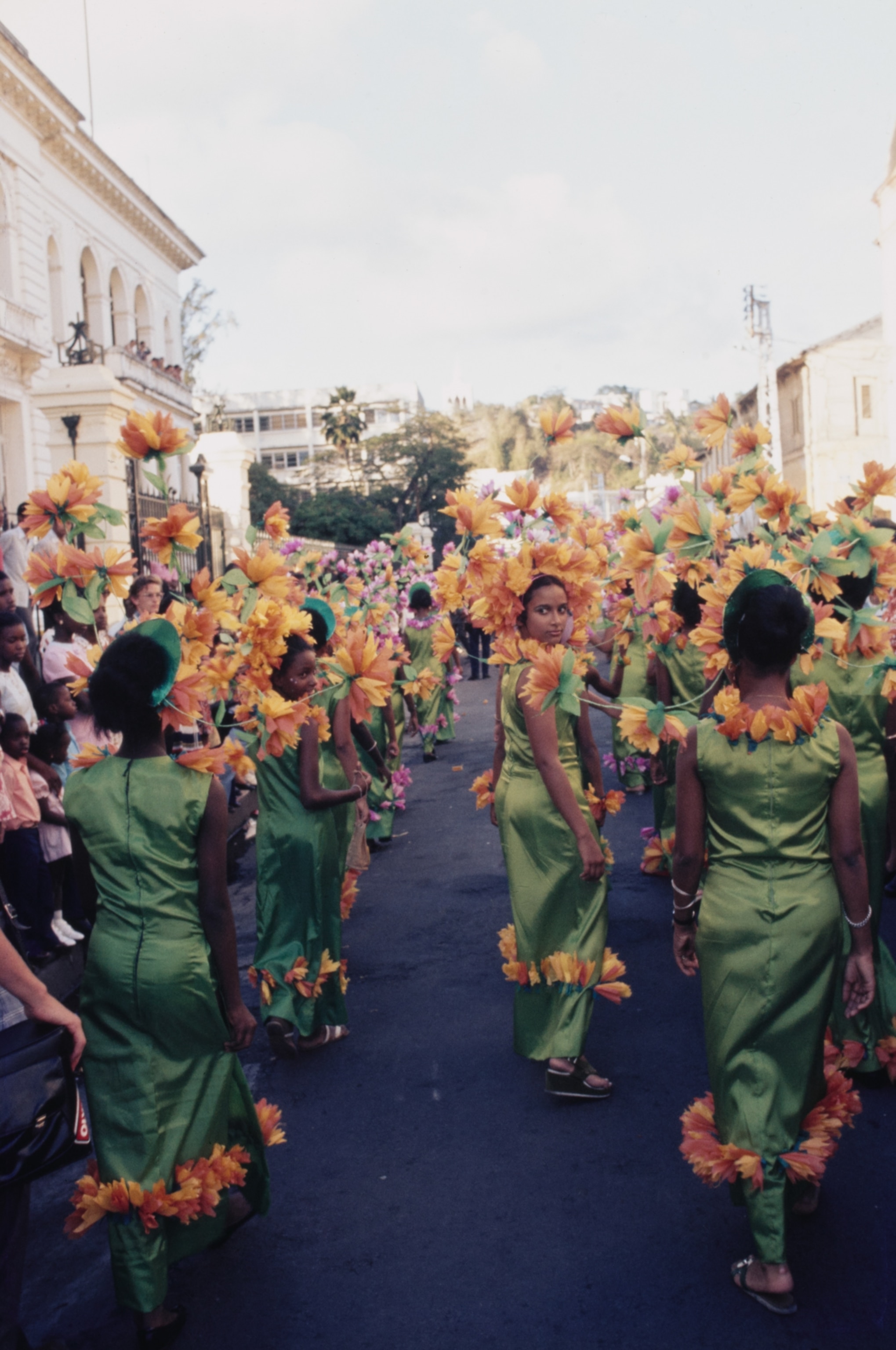

Travel tips for Carnival in Martinique
For the best view on any day, plant yourself on the corner of Fort de France’s Rue de la Liberté, lined with cafes and lively bars. Travelers can get a first-hand experience of the inventiveness that defines Martinique’s Carnival with Sylvaine Eneleda, an artist who creates papier-mâché masks inspired by Martinican folklore. Stop by her Atelier ARTPERKUT studio in the capital city of Fort-de-France, located in Palais de Justice.
The best accommodation to be near the daily action is the 95-room Simon Hotel, just steps away from many of Fort-de-France’s restaurants and bars. To cool down after the crowds subside, visitors should consider the intimately chic French Coco Hotel, and don’t skip a visit to the wellness retreat of Bouliki Bio, where riverside massages and cocoa body scrubs in a peaceful rainforest will leave you centered and ready to return for more.
When hunger strikes, make your way to Galanga Fish Bar, where fresh catches of the day get sliced and diced into tataki and ceviche or fried to accompany chips. For dining in the heart of capital Fort-de-France, Yellow House serves a memorable duck confit and an extensive wine list.
(Related: 6 of the best Italian Carnivals beyond Venice, from north to south.)

Junkanoo in the Bahamas
Junkanoo, a uniquely Bahamian celebration, is held on Boxing Day and New Year’s Day. Originating in the 16th century, this celebration embraces African traditions used by enslaved people to celebrate their culture during the holidays.
Today, the music-filled parade is a colorful spectacle of handcrafted costumes called “junkanoo suits” that glitter along Nassau’s downtown streets. Participants spend months preparing kaleidoscopic floats and the impeccably detailed costumes worn with pride down streets for thousands of onlookers. Children are also involved in this annual tradition, and it’s impossible not to be impressed by the level of detail in both choreography of movement.
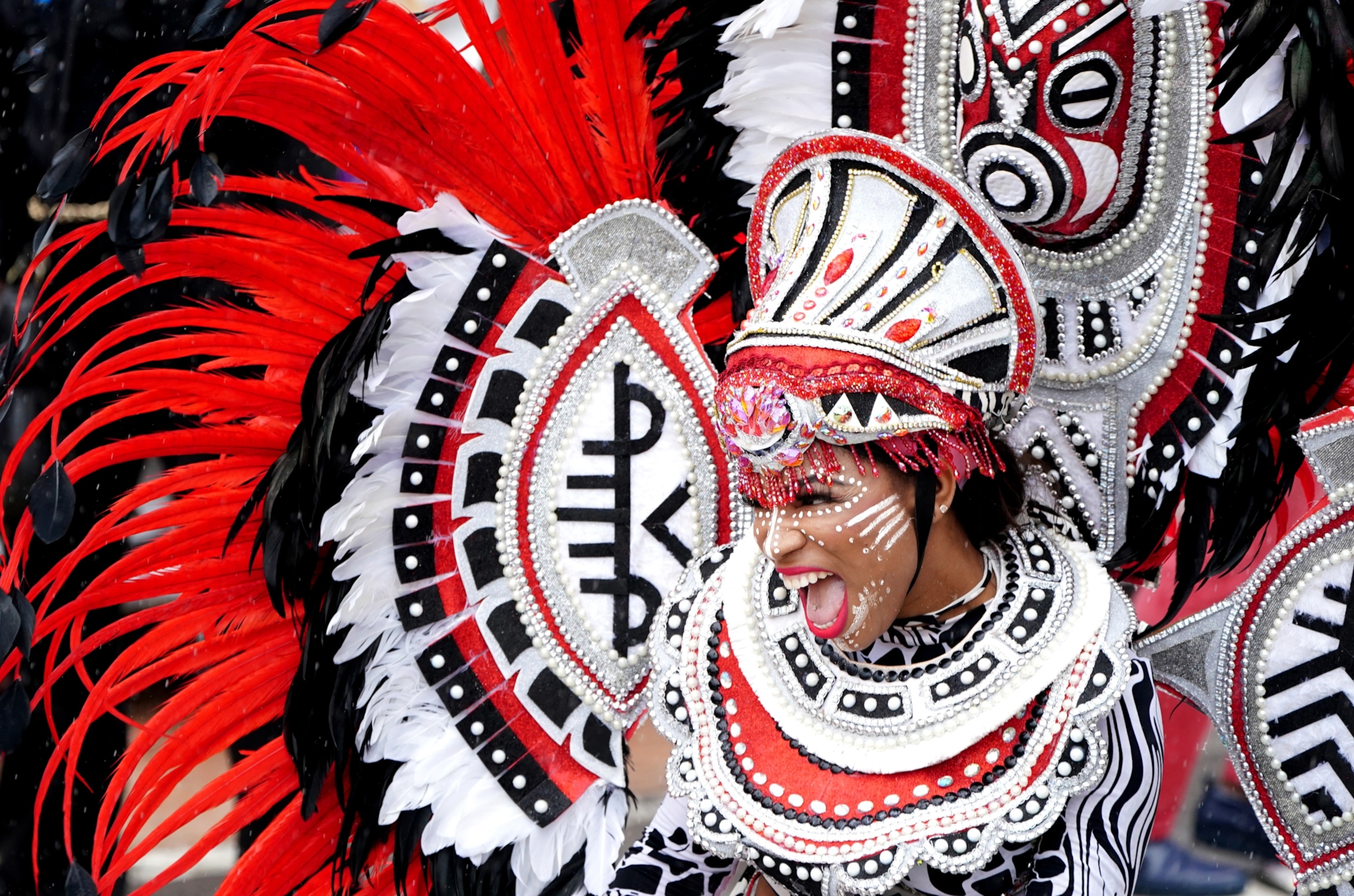
Travel tips for Junkanoo in the Bahamas
For a better understanding of this sacred tradition, visit the The Bahamas Museum of Junkanoo. Beyond the crowds of Junkanoo, consider Bon Vivants’ highly curated cocktail list, with offerings that deliciously marry Caribbean fruits and spirits. For revelers looking for a luxurious beachside homebase, The Ocean Club, A Four Seasons Resort, serves up a fresh catch of the day and silky ceviches with sea views on a prime slice of white sand.
(Related: Everything you should know about the Bahamas.)

Carnival in Guadeloupe
From the first Sunday in January to Ash Wednesday, the islands of Guadeloupe come alive with one of the world’s most culturally rich carnival celebrations in the Caribbean. Unlike the big parties of Trinidad and Barbados that have become more mainstream, Guadeloupe’s carnival remains centered on the people of the island and their pride in their culture and tradition. From the sounds of goatskin-stretched drums echoing through the streets to stilted figures called moko-zobis that tower above crowds, it is impossible to leave this carnival without feeling its electric authenticity.

Travel tips for Carnival in Guadeloupe
Charging through the streets with military step precision, Klé La continues the tradition of the carnival “po group” that taps into ancestral sounds of chanting and drumming to fuel their communal gathering. Along with other spectators, you can witness their dynamic energy every Sunday leading up to Carnival on the streets of Pointe-à-Pitre and beyond alongside other spectators.
Beyond Carnival festivities, visitors to Guadeloupe can experience the island’s rich cocoa history with a workshop at Gwakako, where you’ll learn about the maturation of cocoa pods and even make your own cocoa tea and bars. For a quick bite to eat, try the island’s bokit—a handheld sandwich similar to a lightly fried naan bread that comes filled with options like grilled chicken or steak—or enjoy a seaside dinner at Le Grand Bleu.
Visit the The Mémorial ACTe Museum, which features exhibits that retrace the history of the slave trade all the way to present day. It’s a powerful opportunity to understand Guadeloupe’s history and heroes of resistance in one of the largest cultural centers dedicated to the memory of the slave trade.
For an accommodation option, the beachside La Creole Hotel & Spa is centrally located and offers junior suites for larger groups.
(Related: Beyond the beach: Top things to do when visiting Guadeloupe.)
Mas Dominik in Dominica
The lush island of Dominica draws revelers to its streets, flanked by teeming rainforests that provide the ultimate paradisiacal setting. Also known as Mas Dominik, Carnival here embraces similar traditions of its neighboring islands, including J’ouvert, pageants, street parades with Calypso music, and a kiddie carnival.
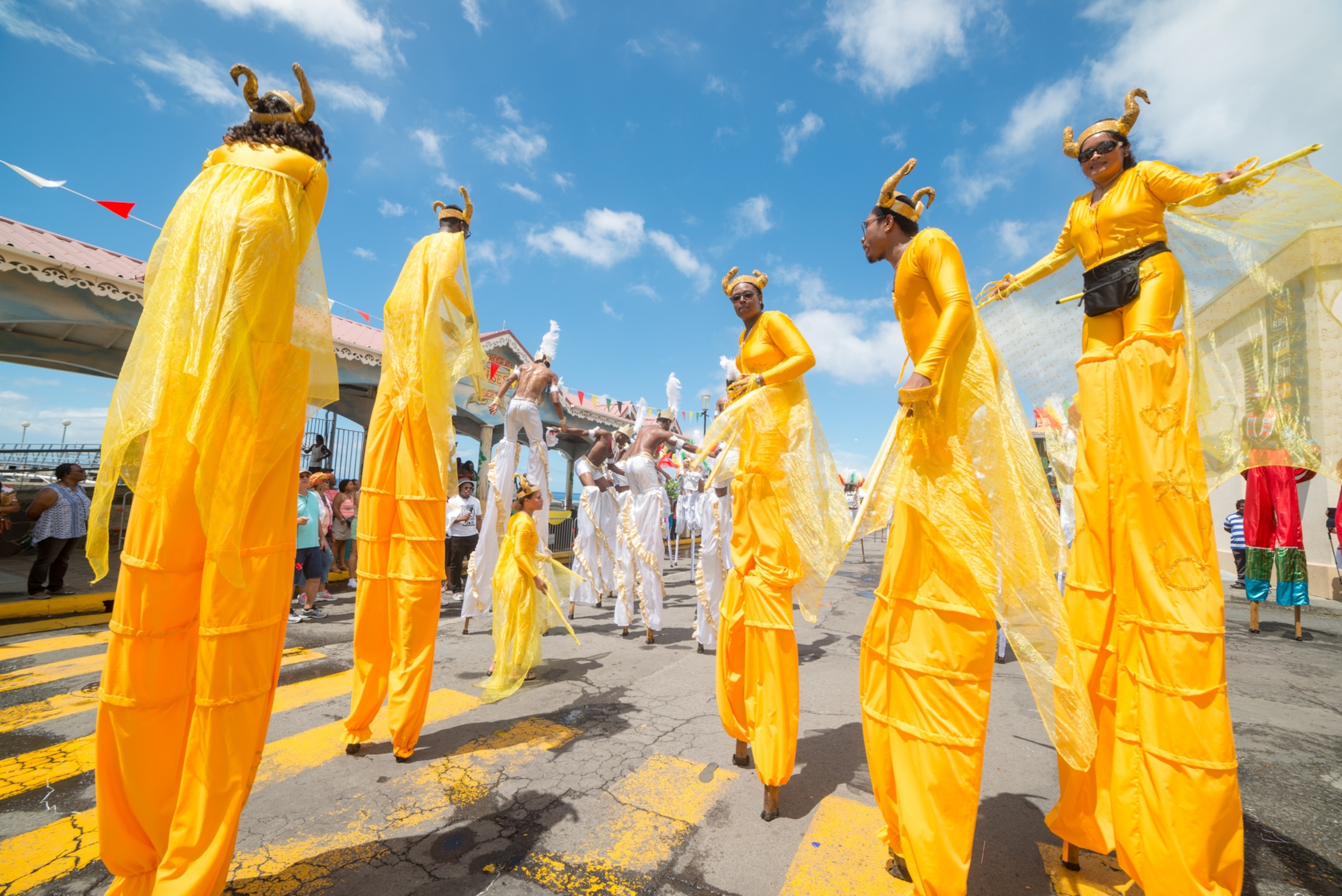
Travel tips for Mas Dominik in Dominica
During my first visit to Dominica’s Carnival, I was equally enamored with both the nonstop celebrations and the island's topography. It’s easy to see why the country is referred to as Nature Island. Seventy-five percent of the island is covered with rainforests, alongside bubbling hot springs, waterfalls, and over 300 rivers. Make InterContinental Dominica Cabrits Resort & Spa—which sits along a flourishing natural reserve—your homebase for all the celebrations. The property is currently offering a Carnival Package that includes breakfast and transportation to two Carnival events.
To understand the beauty of Dominica in a more remote setting, check into the cliffside, all-villa Secret Bay Resort. Black sand beaches, private plunge pools, and an outdoor chef’s table experience are just a few perks that heralded awards for the best luxury hotel in the Caribbean.
(Related: Big-time adventures on an island where nature rules.)
Crop Over in Barbados
While the culmination of events for many Carnivals occurs around Lent, Barbados’s celebration, Crop Over, takes center stage every summer. In the 17th century, the island was one of the world’s largest sugarcane producers. When the harvest season ended, typically in the summer, enslaved people who sustained the booming economy celebrated, hence the name “crop over.” The celebration of Barbados’s resilience and critical influence in the Caribbean’s agricultural economy makes this time of year a source of pride for many Bajans. A series of events culminates into Carnival Monday, called Grand Kadoomen, where a sea of feathers and bacchanalia sweep across the island.
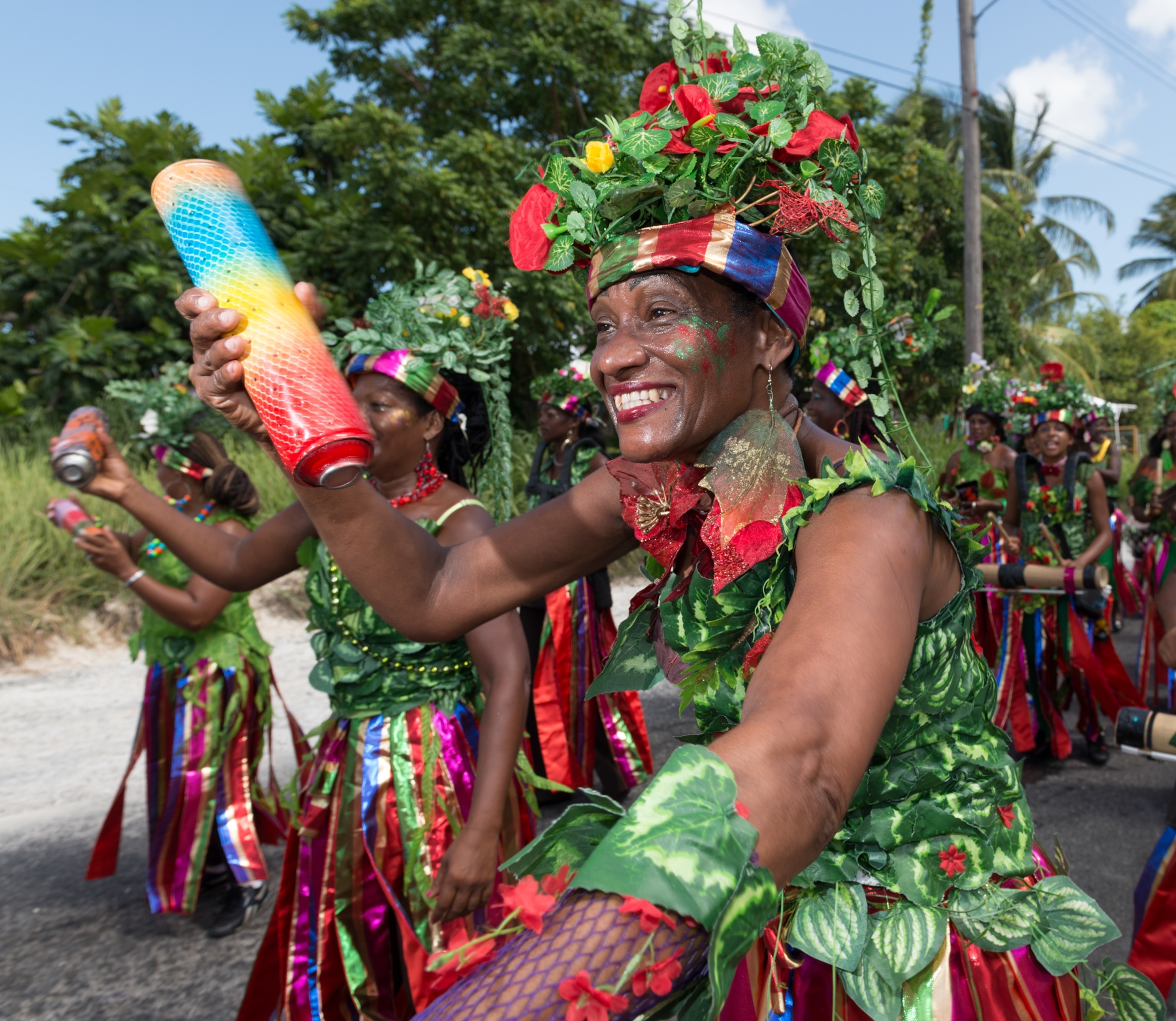
Travel tips for Crop Over in Barbados
You can also experience Bajan culture first-hand with visits to island mainstays like the weekly Oistins Fish Fry, beachside La Cabane, and Cuz’s Fish Shack, famous for their addictive fried fish sandwiches called cutters. When thirst strikes, take your pick at some 1500 rum shops around the island, which is considered the birthplace of rum. For a more formal tour, schedule a visit at Mount Gay for a variety of experiences that include chocolate and rum pairings and a cocktail masterclass.
(Related: Where to eat in Barbados, from fish shacks to innovative restaurants.)
Carnival in Trinidad
Often called the greatest show on earth, Trinidad’s Carnival is the blueprint for many first-time or repeat bachannalists. The island is also considered the birthplace of Carnival, created by enslaved Africans who burnt sugarcane (called Canboulay) as an act of rebellion against plantation slavery. After slavery was abolished in 1838, the British government tried to prohibit Canboulay alongside other sacred practices like drumming, masquerading, and steelpan music. The formerly enslaved Trinidadians fought back in a series of riots—a stance that would ensure Carnival would continue today.
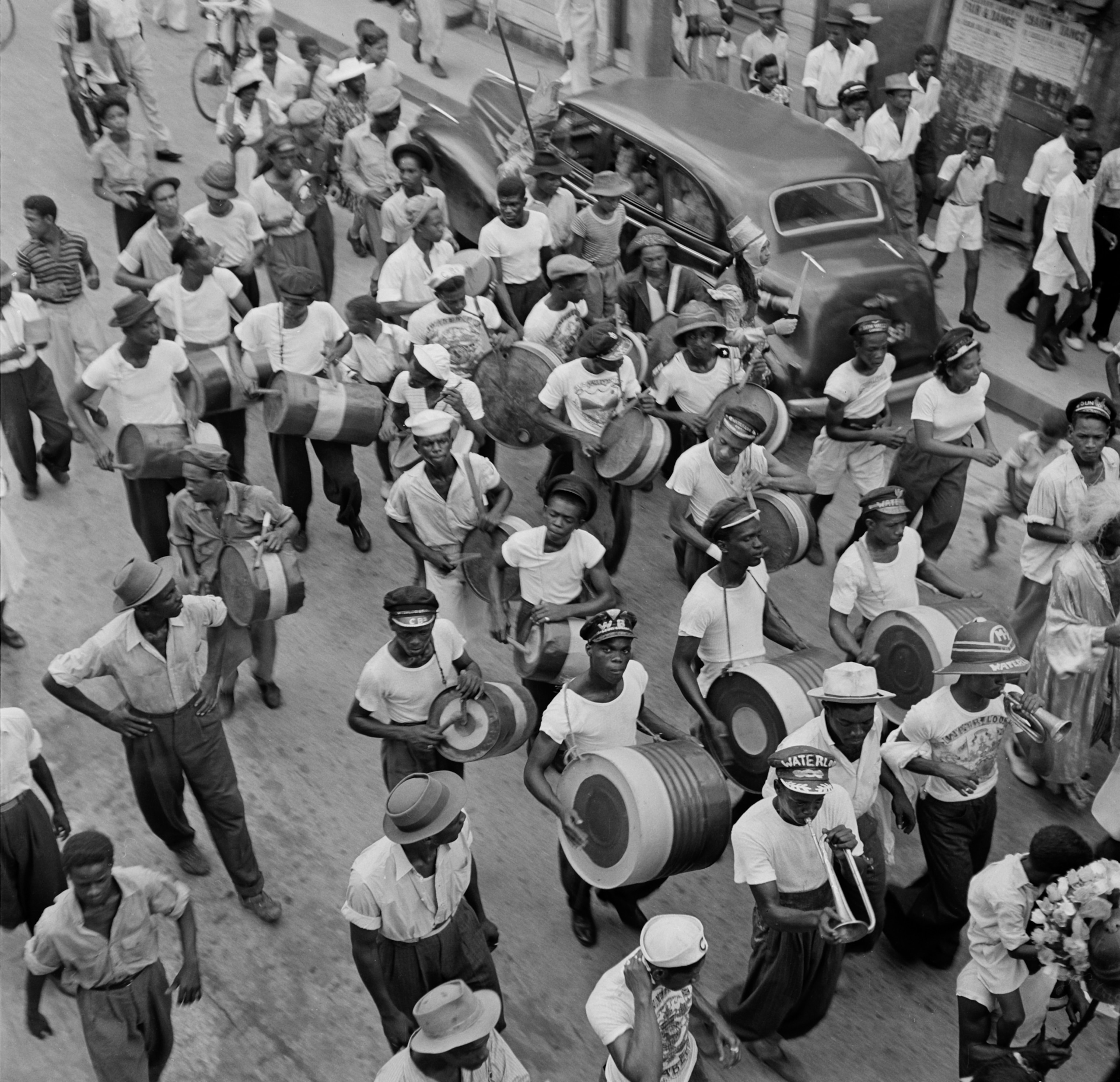
Much of Trinidadian culture perfectly complements the energy of Carnival, including words that refer to partying and socializing—like limin’, fetin’, and gettin’ on bad. Trinidad’s Carnival requires pacing, as celebrations are offered around the clock, and sleep can quickly become a distant memory.
Carnival Monday and Tuesday take over the streets of Port of Spain, while other fetes commence on hillsides, beaches, and boats. Stickfighting, the Panorama steelpan competition, and chipping (dancing) down the road during J’ouvert are all integral parts of the experience, too. Then there’s the soundtrack for it all—soca. This mashup of East Indian and West African sounds is the lighter that ignites every moving body during Carnival.
It’s easy to get overwhelmed by the number of events listed online, but I’ve never been disappointed by any production by the Trinidadian festival production company, Caesar's Army, particularly A.M.Bush, a themed extravaganza that ends in paint, powder, splashes of rum, and even waterslides.
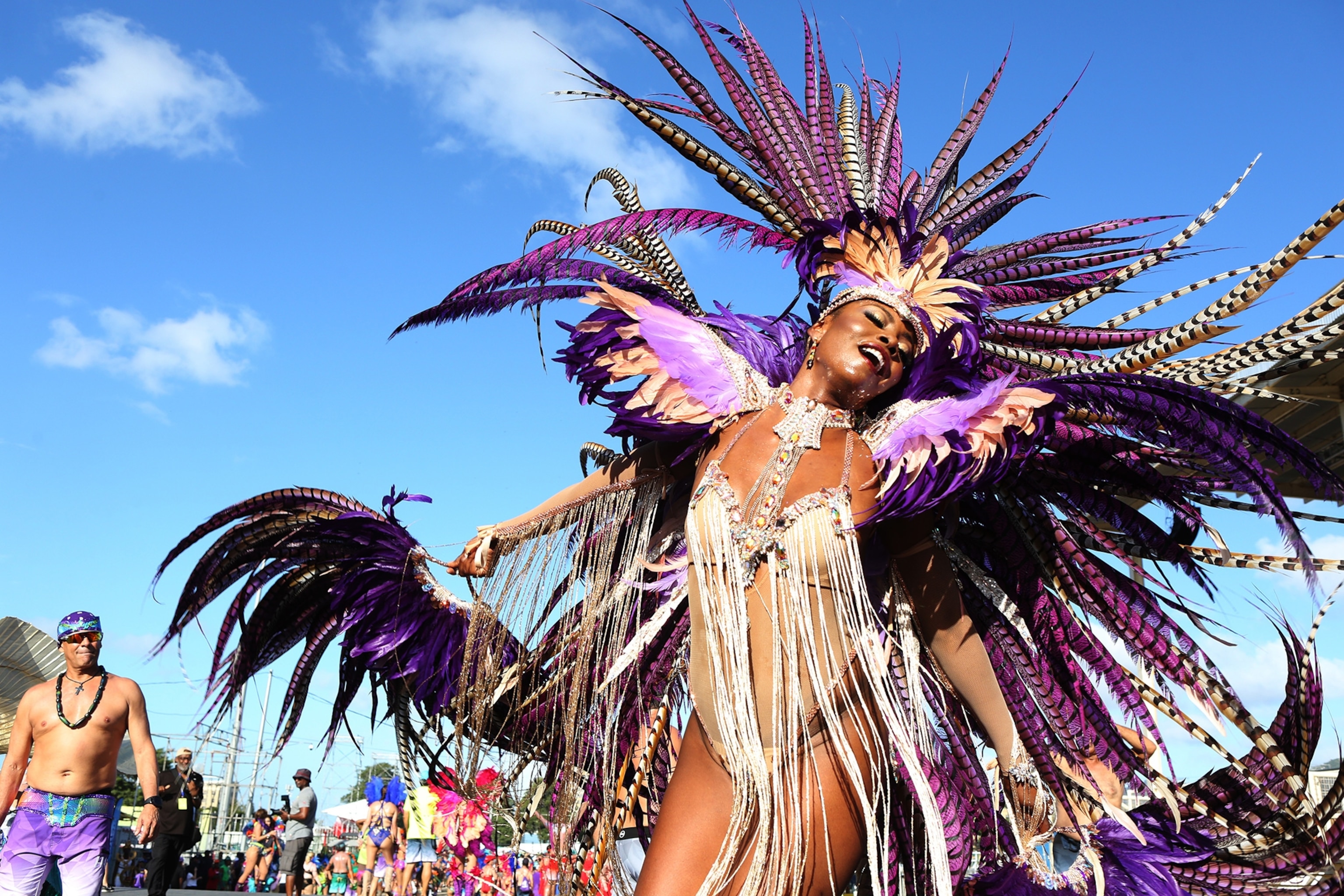
Travel tips for Carnival in Trinidad
Fuel up with some of the island’s most delicious foods, including corn chowder, doubles—two fried pieces of dough stuffed with chickpeas and mango chow—and a fruit salad with lime juice and spices. In the northern part of the island, Maracas Beach is home to sunbathers and Richard’s Bake and Shark. Line up with the rest of the crowds to try the island’s famous fish sandwich, housed between two pillowy soft pieces of bread called bake and topped with condiments that include mango chutney and tamarind sauce.
Trinidad is also home to a leatherback turtle nestling ground at Matura Beach. You can witness hatchlings first-hand with a conservation group called Nature Seekers. When sleep finally does call, check into the centrally located Hyatt Regency, home to a rooftop pool and plenty of guests from around the world.
(Related: 8 of the best Caribbean carnivals.)




